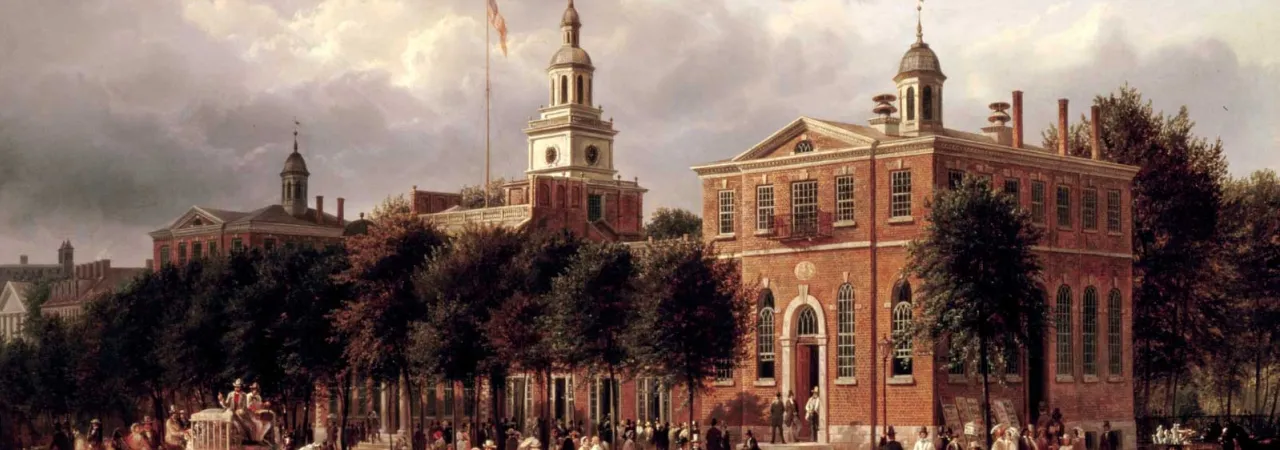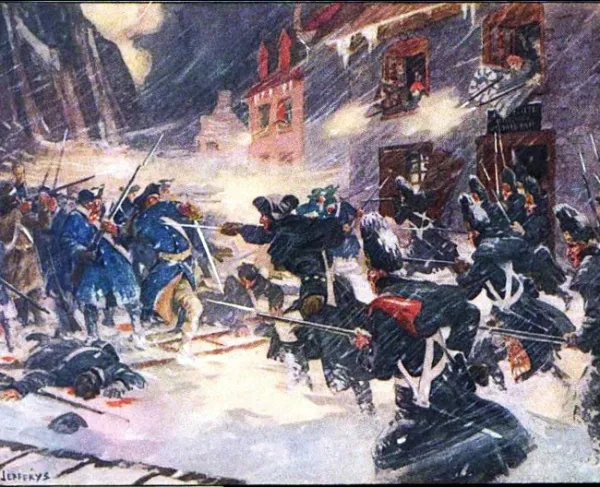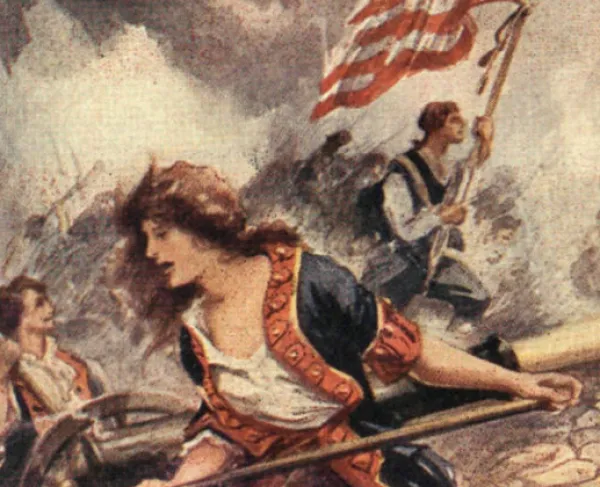
During the American Revolution, the British successfully overtook the American capital city of Philadelphia, Pennsylvania. Here are 10 facts about how the British gained control of Philadelphia, and later, how the Americans took it back.
Fact #1: Philadelphia was the American capital during the War.
In 1776, Philadelphia was the largest city in the United States and the first American capital city. The Continental Congress had met there since 1774. Although Congress was forced to move due to emergencies throughout the war, for most of the war, they met in Philadelphia at the Pennsylvania State House, known today as Independence Hall.
Fact #2: The British chose a roundabout way to attack the capital in the summer of 1777.
In 1776, British General William Howe captured the city of New York, and in the following year set his sights on the American capital of Philadelphia. Rather than march overland to assault the city, Howe decided to sail his army down, around Maryland, and up the Chesapeake Bay. He landed his army in Maryland and began to march from the south towards Philadelphia.
Fact #3: The Americans fought bravely, but were defeated at the Battle of Brandywine, just 10 miles from Philadelphia.
George Washington and his army tried to block Howe at the Brandywine Creek on September 11, 1777. The large battle was fought all day, but Washington was flanked and defeated, opening the door for the British Army to march into the American capital.
Fact #4: The British occupied Philadelphia from September 1777 – June 1778.
For nearly a year, the British occupied the American capital. Loyalist civilians welcomed the British, while Patriot civilians endured the occupation. Despite the loss of their capital city, George Washington and the Continental Army continued to put up resistance while the Continental Congress fled to York, Pennsylvania.
Fact #5: Washington attempted to retake Philadelphia at the Battle of Germantown in October 1777.
On October 4, 1777, Washington led an assault on the British just outside of Philadelphia at Germantown. The battle appeared to go in the Americans' favor, but soon the tide shifted, and Washington was driven back.
Fact #6: The Americans spent the winter of 1777-1778 at Valley Forge.
Unable to dislodge the British, Washington’s army settled into winter quarters at Valley Forge. There, thousands of American soldiers died of disease. Despite the conditions, the Continental Army came out of the ordeal stronger and more disciplined than ever, ready to take on the British army.
Fact #7: When news reached Philadelphia that France had joined America’s side, the British evacuated Philadelphia in June 1778.
General Henry Clinton, now the British commander, left Philadelphia in 1778. Realizing that other British interests were at risk around the globe, it was less important that they hold the American capital. While marching overland from Philadelphia to New York City, Washington’s army attacked the British in New Jersey and fought them to a draw at the Battle of Monmouth on June 28, 1778.
Fact #8: America retook Philadelphia in June 1778.
The Patriots retook the American capital and the British never again made a serious attempt to assault Philadelphia. They chose instead to shift their focus to the Southern states.
Fact #9: Washington proved the Americans would continue to fight regardless of what cities the British held.
Whereas in European countries, the capture of an enemy capital might force the enemy into submission, Washington and the Patriots continued to fight even with the major cities under enemy occupation. As long as the Continental Army existed and could fight, the war would continue.
Fact #10: This was the first of the three times the United States capital city was attacked by an army in American history.
The two other times were in 1814 when British troops attacked and burned Washington, D.C., and in 1864, when Confederate forces attacked and were repulsed at Fort Stevens in Washington, D.C.
We can save three remarkable battlefield sites if we can raise $201,500. Every dollar you can donate to this cause will be multiplied by $23.80.
Related Battles
1,300
587
1,111
533
325
381





